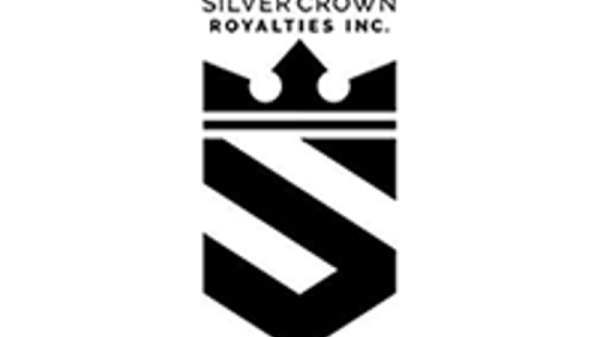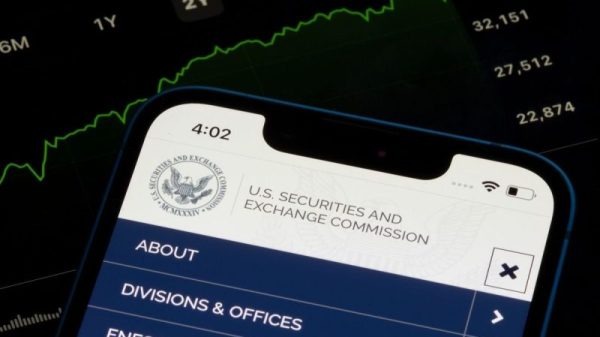The biggest pharmaceutical companies in the world are responsible for developing and manufacturing the vast majority of prescription drugs, giving them a key role in the life science industry.
The pharma sector is responsible for the discovery, development and manufacturing of drugs and medicine. Companies are developing innovative treatments in areas like immuno-oncology and neurology, as well as novel options for rare diseases. 2023 in particular has seen a lot of buzz around diabetes and weight loss treatments.
With the pharmaceutical sector projected to reach a staggering US$1.6 trillion in total revenue by 2028, the need for the industry is great. Opportunities for investment are also sizeable, but what’s the best place to start? Those who want exposure to the pharma market may want to begin by looking at the major players in the space.
With that in mind, here are the five biggest drug companies by market cap. Data for this article was compiled using Investing.com’s stock screener on November 16, 2023, and stocks are listed from largest to smallest.
1. Eli Lilly and Company (NYSE:LLY)
Market cap: US$529.28 billion
Founded in 1876, Eli Lilly and Company has R&D facilities and manufacturing plants in eight countries and has done clinical research in over 50 countries. Its pharma products include therapies for diabetes, cancer, immune system diseases and a wide range of mental health conditions. As for its pipeline, Eli Lilly’s clinical trial research areas include cardiovascular health, weight management and neurodegenerative diseases such as Alzheimer’s disease.
In late summer, Eli Lilly closed its acquisitions of Dice Therapeutics, Sigilon Therapeutics and Versanis Bio, adding a wide range of therapies to its portfolio, including Dice’s experimental oral treatment for psoriasis and Versanis’ bimagrumab candidate, which is being assessed for obesity. Sigilon and Eli Lilly have worked together since 2018 on cell therapies for type 1 diabetes that would help remove the need for constant disease management.
On November 2, Eli Lilly released its Q3 financial results, and its share price trended upward on the news by nearly US$40. The quarter included US Food and Drug Administration (FDA) approvals of the firm’s severe ulcerative colitis treatment, Omvoh, and an expanded indication for Jardiance in chronic kidney disease. Eli Lilly also released positive results for its mirikizumab Phase 3 VIVID-1 study, which evaluated the drug’s safety and efficacy in treating Crohn’s disease.
The firm’s revenue was up 37 percent year-on-year, partially due to Eli Lilly’s type 2 diabetes injection Mounjaro, which is expected to be a mega-blockbuster drug and could also treat chronic obesity.
2. Novo Nordisk (NYSE:NVO)
Market cap: US$442.46 billion
Novo Nordisk has honed its efforts on both type 1 and type 2 diabetes, obesity, hemophilia and growth disorders. The company markets products in 170 countries. Its diabetes treatment offerings include the app-supported NovoPen 6 and NovoPen Echo Plus, which give diabetes patients a less invasive way to monitor and record dosing information than traditional methods. Novo has a partnership with Microsoft (NYSE:MSFT); Novo will use the tech giant’s artificial intelligence, cloud and computational services for its drug discovery and development.
On October 13, the firm released its Q3 financials, including a 38 percent rise in sales and a 47 percent increase in operating profit; in the first nine months of the year, its sales went up 33 percent and its operating profit was 37 percent higher.
On November 11, Novo shared positive results for its semaglutide therapy, which is geared at achieving weight loss and reducing the risk of cardiovascular events for people who are living with obesity and have no history of diabetes. According to a release, the trial consistently demonstrated a statistically significant 20 percent risk reduction in major adverse cardiovascular events across age, gender, ethnicity and starting body mass index.
3. Johnson & Johnson (NYSE:JNJ)
Market cap: US$358.2 billion
Next on this list of the biggest pharma companies is Johnson & Johnson, a life science holding firm that is massive in scale and covers many areas through its subsidiaries. Its pharmaceutical subsidiary is Janssen Pharmaceuticals, which focuses on six therapeutic areas: cardiovascular disease and metabolism, infectious diseases and vaccines, neuroscience, oncology, immunology and pulmonary hypertension.
Janssen has recently released positive results for a number of its ongoing trials. In October, its Phase 2b SunRISe-1 study of the TAR-200 monotherapy in patients with Bacillus Calmette-Guérin unresponsive, high-risk non-muscle-invasive bladder cancer showed a 77 percent complete response rate. The same months, its Phase 3 MARIPOSA-2 study targeting non-small cell lung cancer showed that a regimen of RYBREVANT given with or without lazertinib and combined with chemotherapy reduced the risk of disease progression or death by 56 and 52 percent, respectively.
4. Merck & Company (NYSE:MRK)
Market cap: US$256.82 billion
Merck & Company has a massive product line and pipeline, including therapies for diabetes, cancer, vaccines, hospital care and animal health. Currently, the company has over 30 programs in Phase 3 trials and over 10 under review. Merck aims to treat conditions such as cancer, HIV, HPV, Ebola, hepatitis C, cardio-metabolic disease and antibiotic-resistant infections.
Merck has received a series of FDA approvals in the second half of 2023, including: a new indication for its drug PREVYMIS to prevent cytomegalovirus disease in adult kidney transplant recipients who are at high risk; approval for its Ervebo Ebola vaccine starting at age one; and approval for KEYTRUDA in combination with gemcitabine and cisplatin for the treatment of patients with locally advanced unresectable or metastatic biliary tract cancer.
5. AbbVie (NYSE:ABBV)
Market cap: US$242.94 billion
AbbVie’s areas of focus, according to the company, are places where it has proven its expertise and has the potential to improve treatments. Those include immunology, oncology, neuroscience, eye care and aesthetics. The company’s portfolio includes Humira, which is a therapy for autoimmune conditions such as rheumatoid arthritis and Crohn’s disease. It is one of the top-selling drugs of all time, but its patent expired in 2018 and the first biosimilar hit the market in early 2023.
Despite a 6 percent decrease in worldwide net revenues for the third quarter of 2023, AbbVie announced it would be increasing its quarterly dividend for shareholders by 4.7 percent, starting with the dividend payable in February 2024. Also in the quarter, AbbVie announced the submission of new indication applications for Skyrizi (risankizumab) to the FDA and European Medicines Agency for the treatment of adult patients with moderately to severely active ulcerative colitis.
FAQs for pharmaceutical stocks
What does the pharmaceutical industry do?
The pharmaceutical industry encompasses a variety of companies that have different — although sometimes overlapping — roles to play. The most famous players are the big pharma companies. These giants often have a variety of subsidiaries, large pipelines and many products in their portfolios. There are also smaller pharma R&D companies, which sometimes get acquired by larger firms if their work seems promising. Companies in these categories research, develop and sometimes bring to market drugs aimed at filling unmet needs, such as products to treat conditions that are currently untreatable or to help people who are resistant to pre-existing treatment options.
Once patents run out on prescription drugs, generic drug manufacturers create much cheaper generic versions. Wholesale companies also play a large role in the pharma sector. According to Common Wealth Fund, wholesalers have four areas through which they affect the buying and distribution of drugs: ‘setting generic drug prices, leveraging list price increases, competing in specialty drug distribution, and mitigating or exacerbating drug shortages.’
What is the big pharma business model?
Big pharma companies have a fairly consistent business model. Often, the company’s R&D team will slowly develop a new drug through many stages of testing to prove the drug’s efficacy, safety and necessity.
If all trials are completed successfully, the company will apply to government organizations such as the FDA, which must approve the drug before it can be mass produced, marketed and sold. Companies can skip a number of these steps by acquiring smaller companies, or through in-licensing, which results in two companies sharing the burden of a drug’s development through to commercialization. However, it’s worth noting that large pharma companies have many drugs in their pipelines at any given time, and many don’t make it to approval.
Once a drug is approved by the relevant health organization, it can then be marketed and prescribed. Because patents expire after 20 years, companies lobby and advertise to try to get as many sales as possible during that window.
Who are the ‘Big 3’ in pharma?
The ‘Big 3’ in pharma refers to the three largest wholesalers: AmerisourceBergen (NYSE:ABC), Cardinal Health (NYSE:CAH) and McKesson (NYSE:MCK). Collectively, those three companies account for over 92 percent of wholesale prescription drug distribution in the US.
Which country is number one in the pharma industry?
The US is the top pharmaceutical country, with five of the top 10 pharma companies by revenue headquartered in the nation, including the top three of Pfizer (NYSE:PFE), AbbVie and Johnson & Johnson. The country is also in the lead when it comes to consumer spending on pharmaceuticals due to the high cost of brand-name drugs.
The US is also the top country globally for R&D spending — companies that are part of PhRMA, a trade group that represents US biopharmaceutical companies, spent US$100.84 billion on R&D in 2022 out of a total of US$244 billion spent by pharmaceutical companies globally that year.
What are the problems in the pharmaceutical industry?
One of the largest problems with the pharmaceutical industry, particularly in the US, is the high cost of treatments. According to a study looking at American prescription drug spending between 2016 and 2021, prescription drug prices were 2.5 times the cost on average of prices in similar high-income nations.
An example that has been at the center of discourse in recent years is insulin, which can cost Americans with type 1 diabetes over US$1,000 per month. In early 2023, US President Joe Biden signed the Inflation Reduction Act into law, and it includes a cap of US$35 per month on insulin for seniors on Medicare, although it does not help people who are uninsured or have private health insurance. Eli Lilly has now instituted that same price cap for all users of their insulin, and there is push for further legislation.
However, while progress in insulin pricing is happening, it’s far from the only medication with high costs. According to the aforementioned study, the top 10 percent most expensive drugs account for less than 1 percent of all prescriptions, but make up 15 percent of all retail prescription spending.
While generic versions of medications are relatively cheap, they can’t be created until patent protection for the brand name version expires, which is usually 20 years after filing for the patent.
What is the future of pharmaceuticals?
Pharmaceutical companies will have to adapt to changing times moving forward. The world is shifting, with economic woes, geopolitical disruptions and supply chain concerns affecting nearly every sector. Innovation continues to accelerate as well, and the medical landscape has changed in the wake of COVID-19. Additionally, the US government is making moves to address the astronomical prices of prescription medicine as the industry comes under increasing scrutiny.
For a look at what is else is effecting the market in 2023, read our 2023 Pharma Market Forecast.
Are pharmaceutical stocks risky?
While established players like the big pharma and wholesale companies discussed above should be relatively consistent, small companies are make-or-break depending on whether their drugs are successful. This means that investors could see much higher returns compared to large companies, but run the risk of taking massive losses in the case of failure.
Securities Disclosure: I, Melissa Pistilli, hold no direct investment interest in any company mentioned in this article.







































